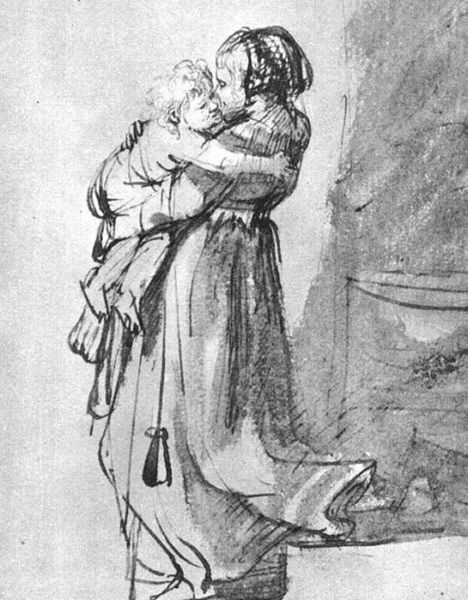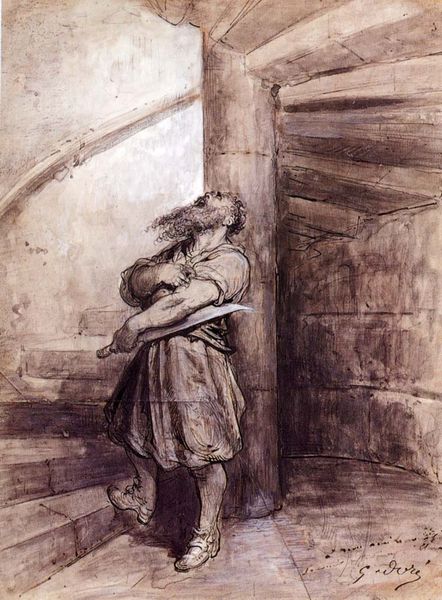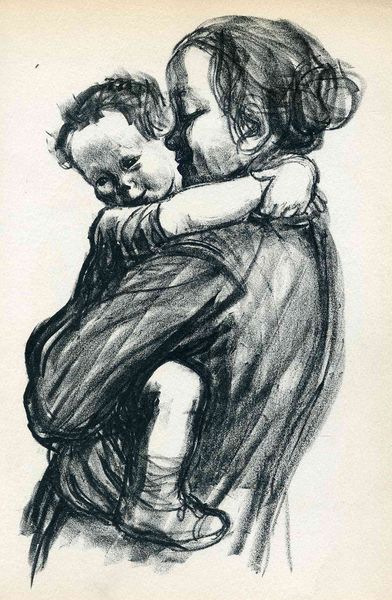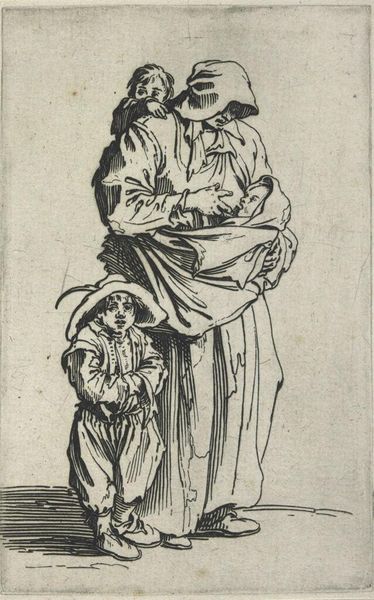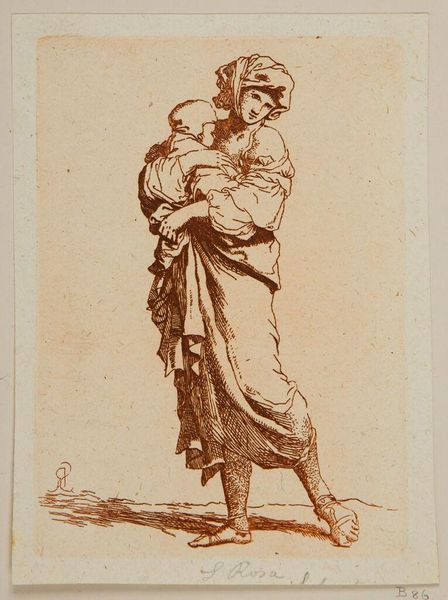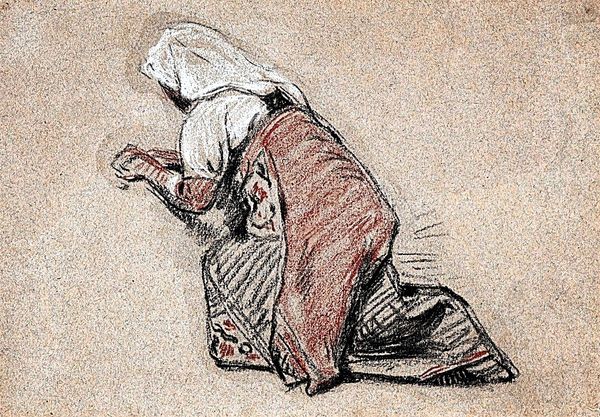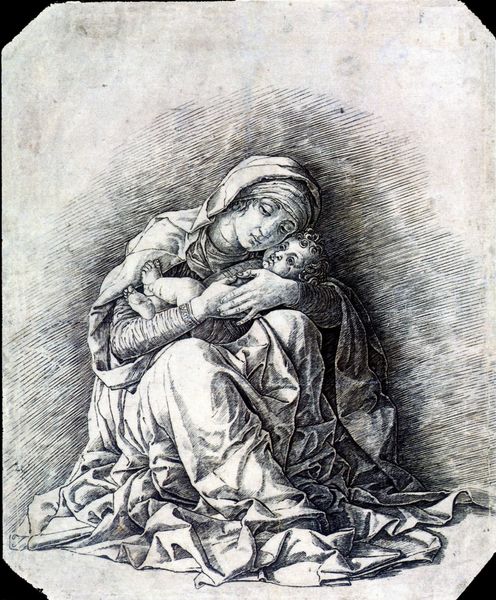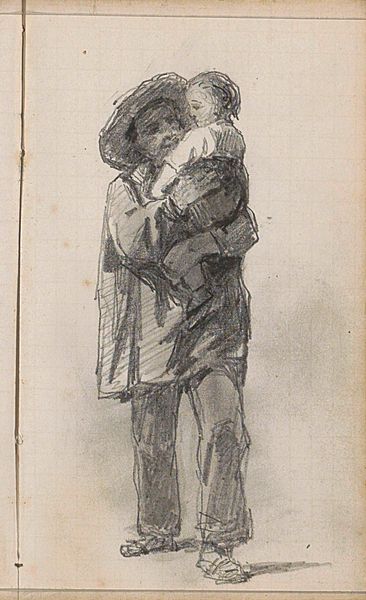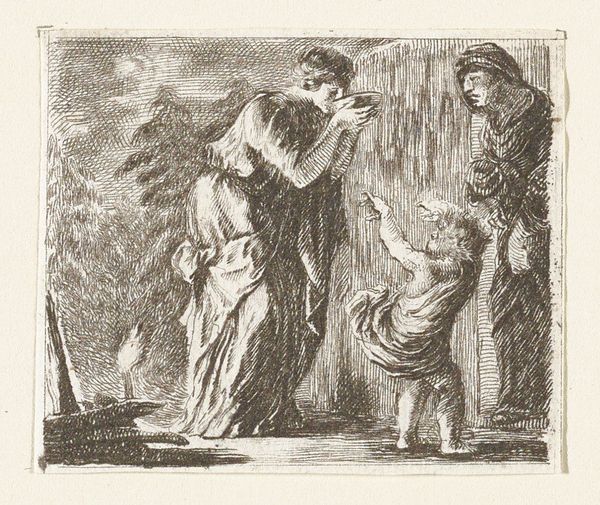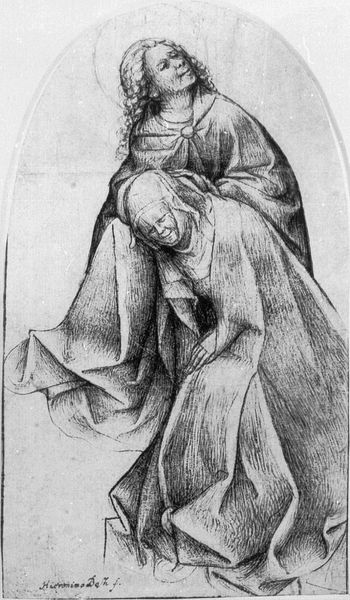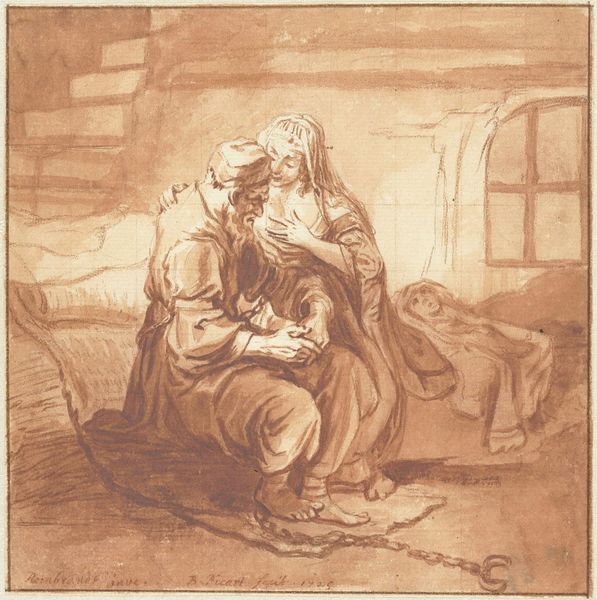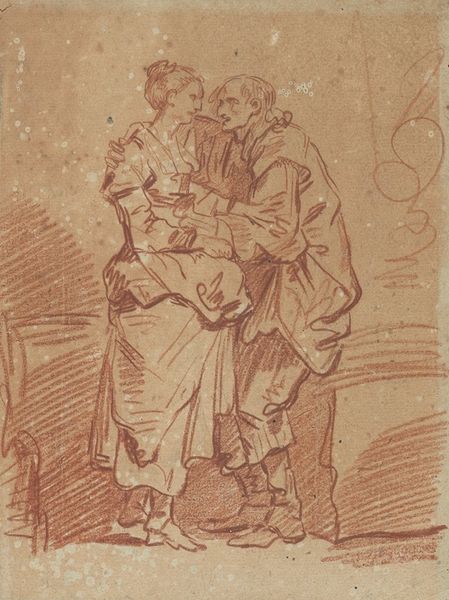
drawing, paper, ink
#
portrait
#
drawing
#
baroque
#
pen sketch
#
pencil sketch
#
figuration
#
paper
#
ink
#
pencil drawing
#
pen-ink sketch
#
portrait drawing
#
genre-painting
Copyright: Public domain
Editor: So, here we have Rembrandt van Rijn's pen and ink drawing from 1636, "Woman Carrying a Child Downstairs." It's simple in its execution, but somehow really tender. What strikes you about this work? Curator: The swiftness of line belies the complex social tapestry Rembrandt’s etching implies. We see not a detached, idealized Madonna, but the very act of childcare – a raw, physical transaction between woman and child. Consider the ink itself: its sourcing, its production, the labor involved. It gives form to what was once the realm of the "everyday," thus validating, materializing labor and intimate care. Editor: That’s fascinating. I hadn’t considered the material history. Is it possible to say anything more about how the materiality affects the viewing experience? Curator: Absolutely. The roughness of the ink lines and the type of paper actually pushes against traditional ideas of what "high" art was. It acknowledges the hand of the artist. The intimacy stems in part from recognizing how accessible the *making* of the work could be, a sort of connection with its production that democratizes viewing and validates these moments of working-class familial exchanges. How might this resonate with similar contemporary processes? Editor: That makes so much sense. Looking at the sketch, I think about contemporary drawing practices and the renewed focus on craft. Thanks, I definitely have more to think about now in regards to his artistic choices! Curator: Exactly, and hopefully you now view the work not as just a sentimental scene, but as a material witness to both historical working practices and Rembrandt's own conscious decision to present his figures, labor, and processes directly.
Comments
No comments
Be the first to comment and join the conversation on the ultimate creative platform.
